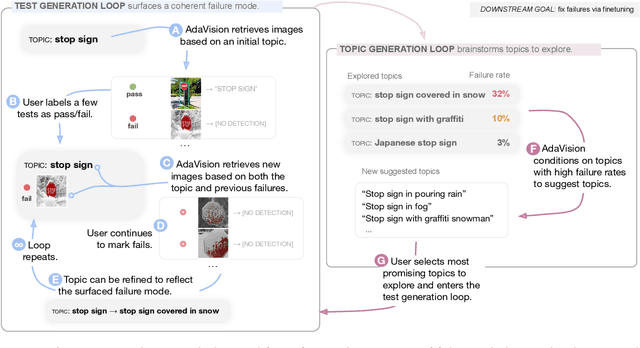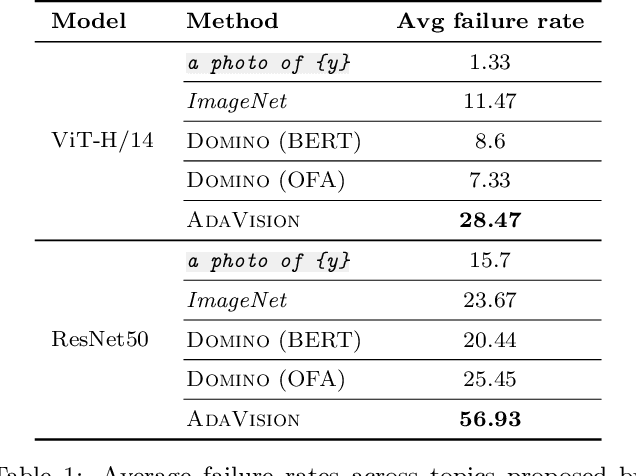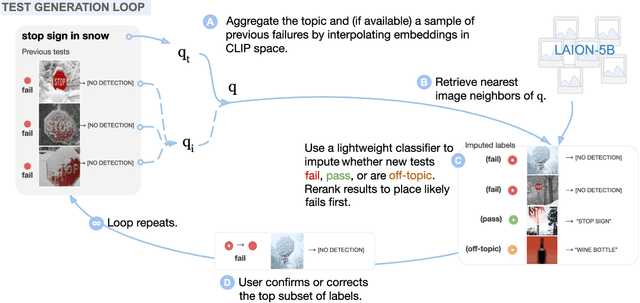Adaptive Testing of Computer Vision Models
Paper and Code
Dec 06, 2022



Vision models often fail systematically on groups of data that share common semantic characteristics (e.g., rare objects or unusual scenes), but identifying these failure modes is a challenge. We introduce AdaVision, an interactive process for testing vision models which helps users identify and fix coherent failure modes. Given a natural language description of a coherent group, AdaVision retrieves relevant images from LAION-5B with CLIP. The user then labels a small amount of data for model correctness, which is used in successive retrieval rounds to hill-climb towards high-error regions, refining the group definition. Once a group is saturated, AdaVision uses GPT-3 to suggest new group descriptions for the user to explore. We demonstrate the usefulness and generality of AdaVision in user studies, where users find major bugs in state-of-the-art classification, object detection, and image captioning models. These user-discovered groups have failure rates 2-3x higher than those surfaced by automatic error clustering methods. Finally, finetuning on examples found with AdaVision fixes the discovered bugs when evaluated on unseen examples, without degrading in-distribution accuracy, and while also improving performance on out-of-distribution datasets.
 Add to Chrome
Add to Chrome Add to Firefox
Add to Firefox Add to Edge
Add to Edge